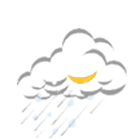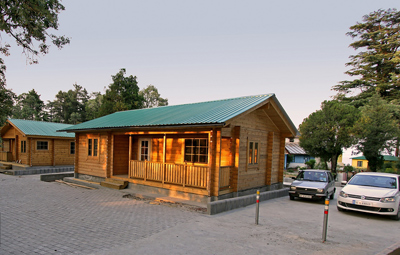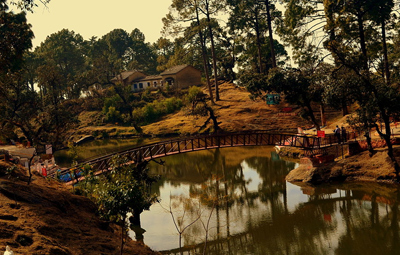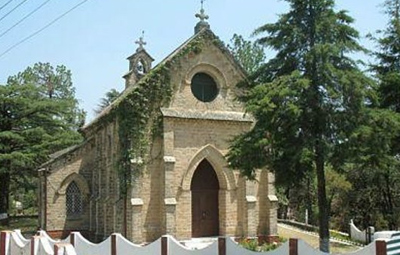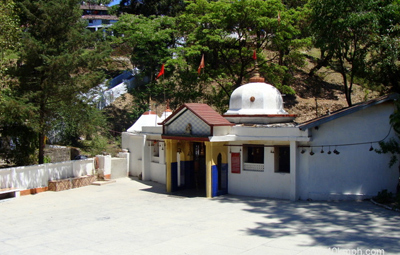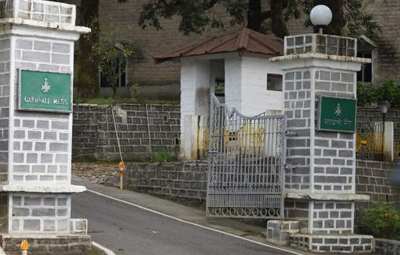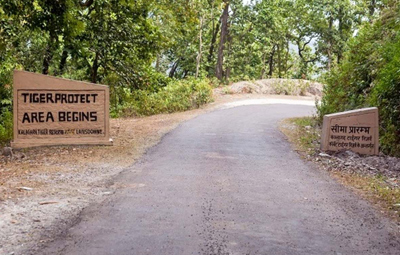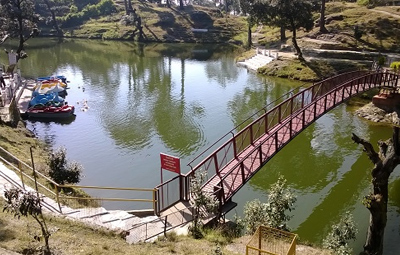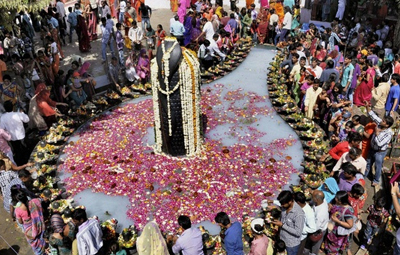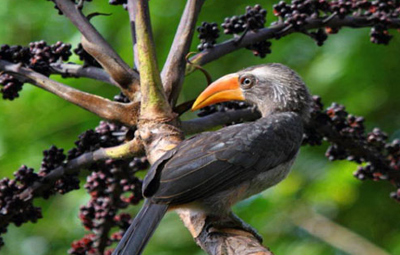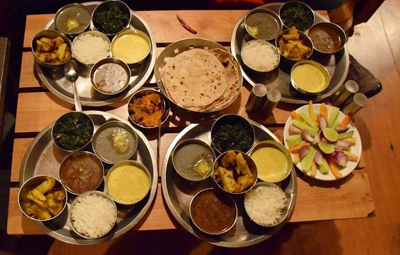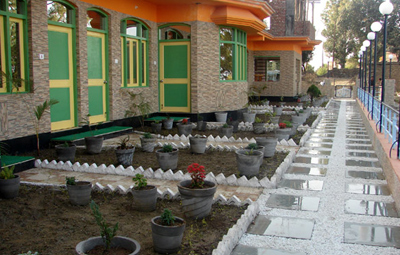Yellow Fever
INFECTIOUS AGENT
Yellow fever virus (YFV) is a single-stranded RNA virus that belongs to the genus Flavivirus.
MODE OF TRANSMISSION
Vectorborne transmission occurs via the bite of an infected mosquito, primarily Aedes or Haemagogus spp. Nonhuman and human primates are the main reservoirs of the virus, with anthroponotic (human-to-vector-to-human) transmission occurring. There are 3 transmission cycles for yellow fever: sylvatic (jungle), intermediate (savannah), and urban.
· The sylvatic (jungle) transmission cycle involves transmission of the virus between nonhuman primates and mosquito species found in the forest canopy. The virus is transmitted via mosquitoes from monkeys to humans when the humans encroach into the jungle during occupational or recreational activities.
· In Africa, an intermediate (savannah) cycle involves transmission of YFV from tree hole-breeding Aedes spp. to humans living or working in jungle border areas. In this cycle, the virus may be transmitted from monkeys to humans or from human to human via these mosquitoes.
· The urban transmission cycle involves transmission of the virus between humans and urban mosquitoes, primarily Aedes aegypti.
Humans infected with YFV experience the highest levels of viremia and can transmit the virus to mosquitoes shortly before onset of fever and for the first 3–5 days of illness. Given the high level of viremia, bloodborne transmission theoretically can occur via transfusion or needlesticks.
EPIDEMIOLOGY
Yellow fever occurs in sub-Saharan Africa and tropical South America, where it is endemic and intermittently epidemic (see Tables 3-21 and 3-22 for a list of countries with risk of YFV transmission). Most yellow fever disease in humans is due to sylvatic or intermediate transmission cycles. However, urban yellow fever occurs periodically in Africa and sporadically in the Americas. In Africa, natural immunity accumulates with age, and thus, infants and children are at highest risk for disease. In South America, yellow fever occurs most frequently in unimmunized young men who are exposed to mosquito vectors through their work in forested or transitional areas.
RISK FOR TRAVELERS
A traveler’s risk for acquiring yellow fever is determined by various factors, including immunization status, location of travel, season, duration of exposure, occupational and recreational activities while traveling, and local rate of virus transmission at the time of travel. Although reported cases of human disease are the principal indicator of disease risk, case reports may be absent because of a low level of transmission, a high level of immunity in the population (because of vaccination, for example), or failure of local surveillance systems to detect cases. This “epidemiologic silence” does not equate to absence of risk and should not lead to travel without the protection provided by vaccination.
YFV transmission in rural West Africa is seasonal, with an elevated risk during the end of the rainy season and the beginning of the dry season (usually July–October). However, YFV may be episodically transmitted by Ae. aegypti even during the dry season in both rural and densely settled urban areas.
The risk for infection in South America is highest during the rainy season (January–May, with a peak incidence in February and March). Given the high level of viremia that may occur in infected humans and the widespread distribution of Ae. aegypti in many towns and cities, South America is at risk for a large-scale urban epidemic.
From 1970 through 2010, a total of 9 cases of yellow fever were reported in unvaccinated travelers from the United States and Europe who traveled to West Africa (5 cases) or South America (4 cases). Eight (88%) of these 9 travelers died. There has been only 1 documented case of yellow fever in a vaccinated traveler. This nonfatal case occurred in a traveler from Spain who visited several West African countries during 1988.
The risk of acquiring yellow fever is difficult to predict because of variations in ecologic determinants of virus transmission. For a 2-week stay, the risks for illness and death due to yellow fever for an unvaccinated traveler traveling to an endemic area in:
· West Africa are 50 per 100,000 and 10 per 100,000, respectively
· South America are 5 per 100,000 and 1 per 100,000, respectively
These estimates are a rough guideline based on the risk to indigenous populations, often during peak transmission season. Thus, these risk estimates may not accurately reflect the true risk to travelers, who may have a different immunity profile, take precautions against getting bitten by mosquitoes, and have less outdoor exposure.
The risk of acquiring yellow fever in South America is lower than that in Africa, because the mosquitoes that transmit the virus between monkeys in the forest canopy in South America do not often come in contact with humans. Additionally, there is a relatively high level of immunity in local residents because of vaccine use, which might reduce the risk of transmission.
CLINICAL PRESENTATION
Asymptomatic or clinically inapparent infection is believed to occur in most people infected with YFV. For people who develop symptomatic illness, the incubation period is typically 3–6 days. The initial illness presents as a nonspecific influenzalike syndrome with sudden onset of fever, chills, headache, backache, myalgias, prostration, nausea, and vomiting. Most patients improve after the initial presentation. After a brief remission of hours to a day, approximately 15% of patients progress to a more serious or toxic form of the disease characterized by jaundice, hemorrhagic symptoms, and eventually shock and multisystem organ failure. The case-fatality ratio for severe cases with hepatorenal dysfunction is 20%–50%.
DIAGNOSIS
The preliminary diagnosis is based on the patient’s clinical features, places and dates of travel, and activities. Laboratory diagnosis is best performed by:
· Serologic assays to detect virus-specific IgM and IgG antibodies. Because of cross-reactivity between antibodies raised against other flaviviruses, more specific antibody testing, such as a plaque reduction neutralization test, should be done to confirm the infection.
· Virus isolation or nucleic acid amplification tests performed early in the illness for YFV or yellow fever viral RNA. However, by the time more overt symptoms are recognized, the virus or viral RNA is usually undetectable. Therefore, virus isolation and nucleic acid amplification should not be used for ruling out a diagnosis of yellow fever.
Clinicians should contact their state or local health department or call 800-CDC-INFO (800-232-4636) for assistance with diagnostic testing for yellow fever infections and for questions about antibody response to vaccination.
TREATMENT
Treatment is for symptoms. Rest, fluids, and use of analgesics and antipyretics may relieve symptoms of fever and aching. Care should be taken to avoid certain medications, such as aspirin or nonsteroidal anti-inflammatory drugs, which may increase the risk for bleeding. Infected people should be protected from further mosquito exposure (staying indoors or under a mosquito net) during the first few days of illness, so they do not contribute to the transmission cycle.
PREVENTIVE MEASURES FOR TRAVELERS
Personal Protection Measures
Vaccine
Yellow fever is preventable by a relatively safe, effective vaccine. All yellow fever vaccines currently manufactured are live-attenuated viral vaccines. YF-Vax, the only yellow fever vaccine licensed for use in the United States, is manufactured by Sanofi Pasteur. Studies comparing the reactogenicity and immunogenicity of various yellow fever vaccines, including those manufactured outside the United States, suggest that there is no significant difference in the reactogenicity or immune response generated by the various vaccines. Thus, people who receive yellow fever vaccines in other countries should be considered protected against yellow fever.
Indications for Use
Yellow fever vaccine is recommended for people aged ≥9 months who are traveling to or living in areas at risk for VFV transmission in South America and Africa. In addition, some countries require proof of yellow fever vaccination for entry. See the Yellow Fever and Malaria Information, by Country section at the end of this chapter for more detailed information on the requirements and recommendations for yellow fever vaccination for specific countries.
Because of the risk of serious adverse events that can occur after yellow fever vaccination, clinicians should only vaccinate people who 1) are at risk of exposure to YFV or 2) require proof of vaccination to enter a country. To further minimize the risk of serious adverse events, clinicians should carefully observe the contraindications and consider the precautions to vaccination before administering yellow fever vaccine (Table 3-23). For additional information, refer to the yellow fever vaccine recommendations of the Advisory Committee on Immunization Practices (ACIP) at www.cdc.gov/vaccines/pubs/ACIP-list.htm.
Vaccine Administration
For all eligible people, a single injection of 0.5 mL of reconstituted vaccine should be administered subcutaneously. The International Health Regulations (IHR) published by the World Health Organization (WHO) require revaccination at 10-year intervals.
Vaccine Safety and Adverse Reactions
Common adverse reactions
Reactions to yellow fever vaccine are generally mild; 10%–30% of vaccinees report mild systemic adverse events. Reported events typically include low-grade fever, headache, and myalgias that begin within days after vaccination and last 5–10 days. Approximately 1% of vaccinees temporarily curtail their regular activities because of these reactions.
Severe adverse reactions
Hypersensitivity
Immediate hypersensitivity reactions, characterized by rash, urticaria, bronchospasm, or a combination of these, are uncommon. Anaphylaxis after yellow fever vaccine is reported to occur at a rate of 1.8 cases per 100,000 doses administered.
Yellow fever vaccine–associated neurologic disease (YEL-AND)
YEL-AND represents a conglomerate of different clinical syndromes, including meningoencephalitis, Guillain-Barré syndrome, acute disseminated encephalomyelitis, bulbar palsy, and Bell palsy. Historically, YEL-AND was seen primarily among infants as encephalitis, but more recent reports have been among people of all ages.
The onset of illness for documented cases is 3–28 days after vaccination, and almost all cases were in first-time vaccine recipients. YEL-AND is rarely fatal. The incidence of YEL-AND in the United States is 0.8 per 100,000 doses administered. The rate is higher in people aged ≥60 years, with a rate of 1.6 per 100,000 doses in people aged 60–69 and 2.3 per 100,000 doses in people aged ≥70 years.
Yellow fever vaccine–associated viscerotropic disease (YEL-AVD)
YEL-AVD is a severe illness similar to wild-type disease, with vaccine virus proliferating in multiple organs and often leading to multisystem organ failure and death. Since the initial cases of YEL-AVD were published in 2001, more than 50 confirmed and suspected cases have been reported throughout the world.
YEL-AVD appears to occur after the first dose of yellow fever vaccine, rather than with booster doses. The onset of illness for YEL-AVD cases averaged 3 days (range, 1–8 days) after vaccination. The case-fatality ratio for reported YEL-AVD cases is 65%. The incidence of YEL-AVD in the United States is 0.4 cases per 100,000 doses of vaccine administered. The rate is higher for people aged ≥60 years, with a rate of 1.0 per 100,000 doses in people aged 60–69 years and 2.3 per 100,000 doses in people aged ≥70 years.
Contraindications
Infants younger than 6 months
Yellow fever vaccine is contraindicated for infants aged <6 months. This contraindication was instituted in the late 1960s in response to a high rate of YEL-AND documented in vaccinated young infants (50–400 per 100,000). The mechanism of increased neurovirulence in infants is unknown but may be due to the immaturity of the blood-brain barrier, higher or more prolonged viremia, or immune system immaturity.
Hypersensitivity
Yellow fever vaccine is contraindicated for people with a history of hypersensitivity to any of the vaccine components, including eggs, egg products, chicken proteins, or gelatin. The stopper used in vials of vaccine also contains dry latex rubber, which may cause an allergic reaction.
If vaccination of a person with a questionable history of hypersensitivity to one of the vaccine components is considered essential because of a high risk for acquiring yellow fever, skin testing, as described in the vaccine package insert, should be performed under close medical supervision. If a person has a positive skin test to the vaccine or has a severe egg sensitivity and the vaccination is recommended, desensitization, as described in the package insert, can be performed under direct supervision of a physician experienced in the management of anaphylaxis.
Altered immune status
Thymus disorder
Yellow fever vaccine is contraindicated for people with a thymus disorder that is associated with abnormal immune cell function, such as thymoma or myasthenia gravis. If travel to a yellow fever–endemic area cannot be avoided in a person with a thymus disorder that is associated with abnormal immune cell function, a medical waiver should be provided and counseling on protective measures against mosquito bites should be emphasized. Because there is no evidence of immune dysfunction or increased risk of yellow fever vaccine–associated serious adverse events in people who have undergone incidental surgical removal of their thymus or have had indirect radiation therapy in the distant past, these people can be given yellow fever vaccine if recommended or required.
HIV infection
Yellow fever vaccine is contraindicated for people with AIDS or other clinical manifestations of HIV, including people with CD4 T-lymphocyte values <200/mm3 or <15% of total lymphocytes for children less than <6 years. This recommendation is based on a theoretical increased risk of encephalitis in this population (see HIV infection under the following section, Precautions).
If travel to a yellow fever–endemic area cannot be avoided in a person with severe immune suppression based on CD4 counts (<200/mm3 or <15% total for children less than <6 years) or symptomatic HIV, a medical waiver should be provided, and counseling on protective measures against mosquito bites should be emphasized. See the following section, Precautions, for other HIV-infected people not meeting the above criteria.
Immunodeficiencies (other than thymus disorder or HIV infection)
Yellow fever vaccine is contraindicated for people with primary immunodeficiencies, malignant neoplasms, and transplantation. While there are no data on the use of yellow fever vaccine in these people, they presumably are at increased risk for yellow fever vaccine–associated serious adverse events (see the section in Chapter 8, Immunocompromised Travelers).
If someone with an immunodeficiency cannot avoid travel to a yellow fever–endemic area, a medical waiver should be provided, and counseling on protective measures against mosquito bites should be emphasized.
Immunosuppressive and immunomodulatory therapies
Yellow fever vaccine is contraindicated for people whose immunologic response is either suppressed or modulated by current or recent radiation therapies or drugs. Drugs with known immunosuppressive or immunomodulatory properties include, but are not limited to, high-dose systemic corticosteroids, alkylating drugs, antimetabolites, tumor necrosis factor α inhibitors (such as etanercept), interleukin-1 blocking agents (such as anakinra), or other monoclonal antibodies targeting immune cells (such as rituximab or alemtuzumab). There are no specific data on the use of yellow fever vaccine in people receiving these therapies. However, these people are presumed to be at increased risk for yellow fever vaccine–associated serious adverse events, and the use of live attenuated vaccines is contraindicated in the package insert for most of these therapies (see the section in Chapter 8, Immunocompromised Travelers).
Live viral vaccines should be deferred in people who have discontinued these therapies until immune function has improved. If travel to a yellow fever–endemic area cannot be avoided for someone receiving immunosuppressive or immunomodulatory therapies, a medical waiver should be provided and counseling on protective measures against mosquito bites should be emphasized.
Family members of people with an altered immune status who themselves have no contraindications can receive yellow fever vaccine.
Precautions
Infants aged 6–8 months
Age 6–8 months is a precaution for yellow fever vaccination. Two cases of YEL-AND have been reported among infants aged 6–8 months. In infants <6 months of age, the rates of YEL-AND are significantly elevated (50–400 per 100,000). By 9 months of age, risk for YEL-AND is believed to be substantially lower. ACIP generally recommends that, whenever possible, travel to yellow fever-endemic countries should be postponed or avoided for children aged 6–8 months. If travel is unavoidable, the decision of whether to vaccinate these infants needs to balance the risks of YFV exposure with the risk for adverse events after vaccination.
Adults 60 years of age or older
Age ≥60 years is a precaution for yellow fever vaccination, particularly if this is the first dose of the yellow fever vaccine given. A recent analysis of adverse events passively reported to VAERS from 2000 through 2006 indicates that people aged ≥60 years are at increased risk for any serious adverse event after vaccination, compared with younger people. The rate of serious adverse events in people aged ≥60 years was 8.3 per 100,000 doses distributed, compared with 4.7 per 100,000 for all vaccine recipients. The risk of YEL-AND and YEL-AVD is also increased in this age group, at 1.8 and 1.4 per 100,000 doses, respectively, compared with 0.8 and 0.4 per 100,000 for all vaccine recipients. Given that YEL-AND and YEL-AVD are seen almost exclusively in primary vaccine recipients, more caution should be exercised with older travelers who may be receiving yellow fever vaccine for the first time. If travel is unavoidable, the decision to vaccinate travelers aged ≥60 years needs to weigh the risks and benefits of the vaccination in the context of their destination-specific risk for exposure to YFV.
HIV infection
Asymptomatic HIV infection with CD4 T-lymphocyte values 200–499/mm3 or 15%–24% of total lymphocytes for children aged <6 years is a precaution for yellow fever vaccination (see also the HIV infection in the Contraindications section above). Large prospective, randomized trials have not been performed to adequately address the safety and efficacy of yellow fever vaccine among this group. Several retrospective and prospective studies including approximately 450 people infected with HIV have reported no serious adverse events among patients considered moderately immunosuppressed based on their CD4 counts. However, HIV infection has been associated with a reduced immunologic response to a number of inactivated and live attenuated vaccines, including yellow fever vaccine. The mechanisms for the diminished immune response in HIV-infected people are uncertain but appear to be correlated with HIV RNA levels and CD4 T-cell counts.
Because vaccinating asymptomatic HIV-infected people might be less effective than vaccinating people not infected with HIV, their neutralizing antibody response to vaccination should be measured before travel. Contact the appropriate state health department or the CDC Arboviral Diseases Branch (970-221-6400) to further discuss serologic testing.
If an asymptomatic HIV-infected person with moderate immune suppression (CD4 T-lymphocyte values 200–499/mm3 or 15%–24% of total lymphocytes for children aged <6 years) is traveling to a yellow fever–endemic area, vaccination may be considered. Vaccinated people should be monitored closely after vaccination for evidence of adverse events, and the state health department or CDC should be notified if an adverse event occurs.
If international travel requirements—not risk of yellow fever—are the only reason to vaccinate an HIV-infected person, the person should be excused from immunization and issued a medical waiver to fulfill health regulations. If an asymptomatic HIV-infected person has no evidence of immune suppression based on CD4 counts (CD4 T-lymphocyte values ≥500/mm3 or ≥25% of total lymphocytes for children aged <6 years), yellow fever vaccine can be administered if recommended.
Pregnancy
Pregnancy is a precaution for yellow fever vaccine administration. The safety of yellow fever vaccination during pregnancy has not been studied in a large prospective trial. However, a recent study of women who were vaccinated with yellow fever vaccine early in their pregnancies found no major malformations in their infants. A slight increased risk was noted for minor, mostly skin, malformations in infants. A higher rate of spontaneous abortions in pregnant women receiving the vaccine was reported but not substantiated. The proportion of women vaccinated during pregnancy who develop yellow fever IgG-specific antibodies is variable depending on the study (39% or 98%) and may be correlated with the trimester in which they received the vaccine. Because pregnancy may affect immunologic function, serologic testing can be considered to document a protective immune response to the vaccine.
If travel is unavoidable and the vaccination risks are felt to outweigh the risks of YFV exposure, pregnant women should be excused from immunization and issued a medical waiver to fulfill health regulations. Pregnant women who must travel to areas where YFV exposure is likely should be vaccinated. Although there are no specific data, ACIP recommends that a woman wait 4 weeks after receiving the yellow fever vaccine before conceiving.
Breastfeeding
Breastfeeding is a precaution for yellow fever vaccine administration. Two YEL-AND cases have been reported in exclusively breastfed infants whose mothers were vaccinated with yellow fever vaccine. Both infants were aged <1 month at the time of exposure. Further research is needed to document the risk of potential vaccine exposure through breastfeeding. Until more information is available, yellow fever vaccine should be avoided in breastfeeding women. However, when travel of nursing mothers to a yellow fever–endemic area cannot be avoided or postponed, these women should be vaccinated.
Other Considerations
Chronic medical conditions that may be associated with varying degrees of immune deficit include, but are not limited to, chronic renal disease, chronic liver disease (including hepatitis C), and diabetes mellitus. Because no information is available regarding possible increased adverse events or decreased vaccine efficacy after administration of yellow fever vaccine to patients with these diseases, caution should be used if considering vaccination of such patients. Factors to consider in assessing patients’ general level of immune competence include disease severity, duration, clinical stability, complications, and comorbidities.
Simultaneous Administration of Other Vaccines and Drugs
Determination of whether to administer yellow fever vaccine and other immunobiologics simultaneously (administration on the same day but at a different injection site) should be made on the basis of convenience to the traveler in completing the desired vaccinations before travel and on information regarding potential immune interference. No evidence exists that inactivated vaccines interfere with the immune response to yellow fever vaccine. Therefore, inactivated vaccines can be administered either simultaneously or at any time before or after yellow fever vaccination. ACIP recommends that yellow fever vaccine be given at the same time as other live-virus vaccines. Otherwise, the clinician should wait 30 days between vaccinations, as the immune response to one live-virus vaccine might be impaired if administered within 30 days of another live-virus vaccine. Because of the different routes of administration, oral Ty21a typhoid vaccine can be administered simultaneously or at any interval before or after yellow fever vaccine.



